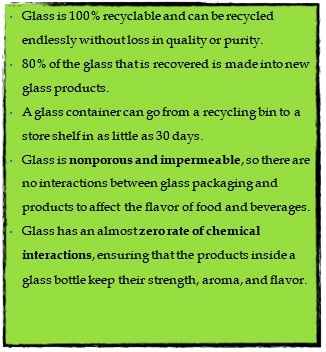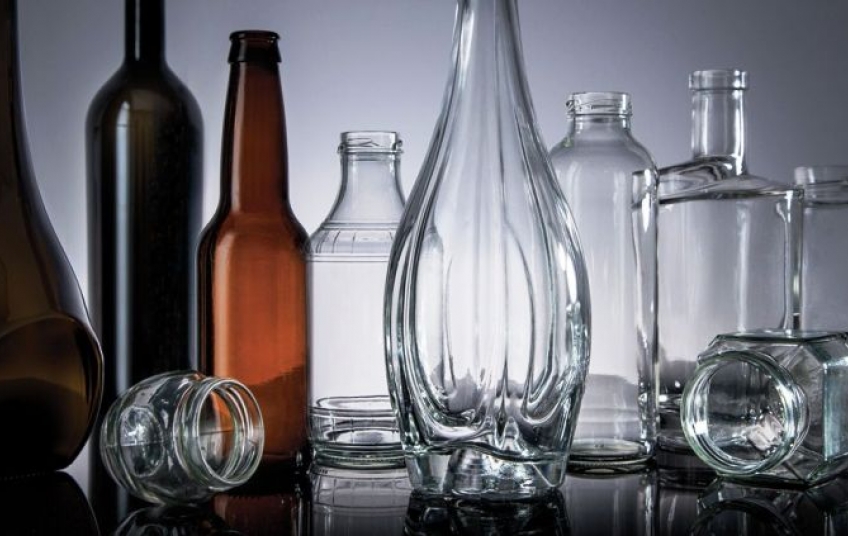Glass is made of all-natural and sustainable materials. Glass is the preferred packaging for consumer’s that are concerned about health and the environment. Glass is preferred for preserving taste and flavor and maintaining the integrity of foods and beverages.

Glass Composition
Glass containers are commonly made with a combination of various oxides or oxygen-based compounds and are commonly referred to as “soda-lime” glass. The combining of raw materials, including sand, soda ash, limestone and cullet, creates glass containers that are durable, strong, impermeable, easily shaped, and inexpensive. The proportion of raw materials is based on availability, chemical and physical consistency, sizing, purity and cost. The goal is to use the most economical and high-quality raw materials available. Some oxides will form glass without adding any other elements and are known as network formers. The most common of these is silica (SiO2).

Glass to Packaging
The impermeable nature of glass makes it a safe form of protective packaging. Besides being an excellent barrier against the external environment, glass containers do not interact with or alter the taste, odor or composition of the products they contain. Glass packaging provides optimum long-term conservation of the original qualities and virtues of food and beverages.
Glass Bottles
Glass bottle packaging has been around for a long time. Yet switching from plastic containers to glass is becoming more popular in recent years, as consumers become more aware of environmentally friendly packaging, and companies rediscover the benefits of glass. Here, we’ll explore the growing popularity and benefits of glass bottle packaging, including safety, sustainability and image.

Safety
Glass is made from all-natural raw materials. Other packaging materials, such as PVC, can have negative effects on the health of humans and the environment. Glass is the only packaging material that the U.S. Food and Drug Administration labels as GRAS: “Generally Recognized as Safe.” Without the addition of chemicals during production, glass containers can effectively protect foods and beverages while preserving the products’ taste and maintaining purity.
Sustainability
Glass is a 100% recyclable, sustainable mono-material (meaning that is not composed of various materials) that can be recycled continuously without losing its purity or quality. Recycled glass containers can be made into new glass bottles, saving energy and raw materials. Other uses for recycled glass include landscaping, countertops, flooring, concrete pavement and tiles.
Image
Glass has a shelf impact unlike any other packaging material, with clarity, shape and texture that cannot be matched by plastics or cardboard. The transparency of glass allows for a clear showcase of the product, while the material’s strength contributes to its premium appearance.
Conclusion
Glass is the most environmentally friendly packaging material we can use. It is the safest packaging material for any products it can hold and enhances products appearance on shelves in ways no other materials can. Glass bottles are also gaining more popularity as culture shifts towards a greater focus on the environment.
References
http://www.gpi.org/learn-about-glass/benefits-glass-packaging
https://www.heritagepaper.net/why-glass-bottle-packaging-is-becoming-more-popular/
http://www.stanpacnet.com/glass-packaging-benefits/
https://www.packagingdigest.com/beverage-packaging/material-or
https://www.verallia.com/en/about-glass
http://www.gpi.org/learn-about-glass/what-glass


































